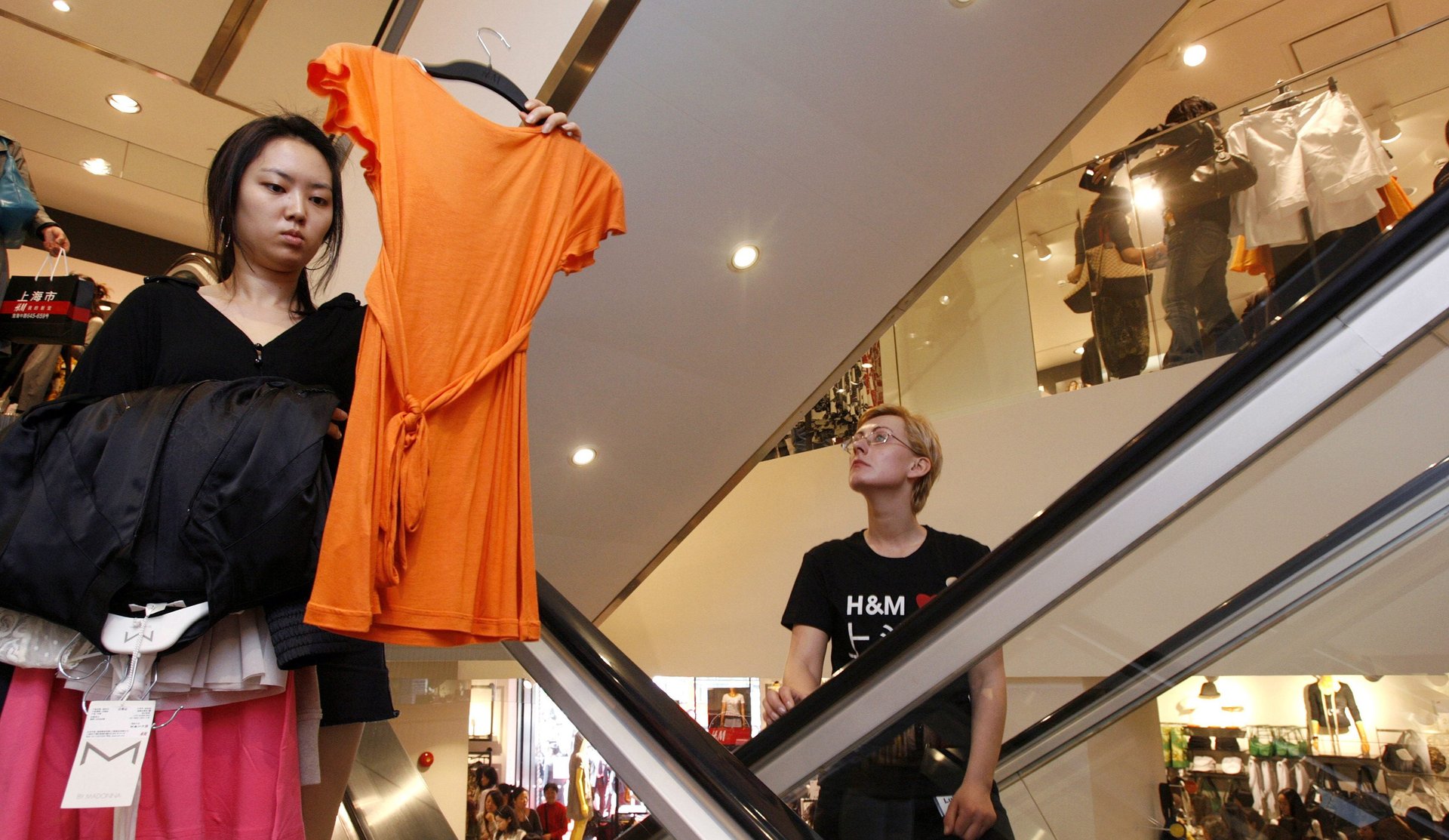Battered by overexpansion in the West, H&M is expanding into China
H&M’s years of investing too much money and energy in its physical stores—and not enough in its digital ones—are catching up with it.


H&M’s years of investing too much money and energy in its physical stores—and not enough in its digital ones—are catching up with it.
Throughout 2017 its business has looked sluggish as shoppers have increasingly passed over its brick-and-mortar locations. But H&M’s most recent quarter (pdf) was the worst yet. Sales were down more than 4% compared to the same time last year. That’s the brand’s worst performance in more than a decade, or “quite possibly the worst quarterly sales performance on record,” according to Cedric Lecasble, an analyst at Raymond James.
H&M said part of the nosedive was from fewer people shopping in stores “due to the ongoing shift in the industry.” That shift is the gradual move of shoppers off the streets and online, which H&M has been slow to adjust to. Its online sales were good, the company said in its press release, but they’re not nearly big enough to make up for the decline at its physical stores.
H&M now seems to be seeking out ways to mitigate the damage. It announced an expanded partnership with Alibaba that will allow H&M to start selling on Tmall, China’s—and maybe the world’s—largest e-commerce platform, starting in spring 2018.
That could boost H&M’s sales in China, which stand at about $1.3 billion today—just a fraction of the roughly $23.5 billion it sold in its 2017 fiscal year. It has been operating in China for a decade, and now has more than 500 physical stores there. But there are huge swathes of the country where an H&M is not within reach, and many online shoppers in China start their product searches by going directly to big platforms such as Tmall. “Tmall and JD.com together control more than 80% of the Chinese online apparel market,” a recent joint report (pdf) by Business of Fashion and McKinsey & Company noted. In a statement, H&M chief executive Karl Johan-Persson said the partnership with Tmall will make H&M more accessible to Chinese shoppers.
H&M also noted that there were problems with its assortment of clothes this past quarter, basically meaning it didn’t do a good enough job predicting what shoppers would want. That points to a separate issue the company faces. Despite being one of the pioneers of fast fashion, H&M is no longer a leader in speed. It’s slow compared to online upstarts such as ASOS and Boohoo, according to an analysis by Goldman Sachs, and H&M’s supply-chain lead times are about twice those of competitor Zara.
Zara’s fast turnarounds have let it keep up better with what customers are—and aren’t—buying. Investors have responded, even though there is concern that Zara’s profit margins have been shrinking (paywall).
Johann-Persson conceded earlier this year that his company needs to pick up its pace getting clothes into stores. Its main markets are in Europe and the US, but it still makes much of its clothes in distant countries such as Bangladesh and Cambodia. He said they were looking to move some production to Turkey or countries in Europe to speed up their deliveries. After all, they still have to stock all those stores they built up.